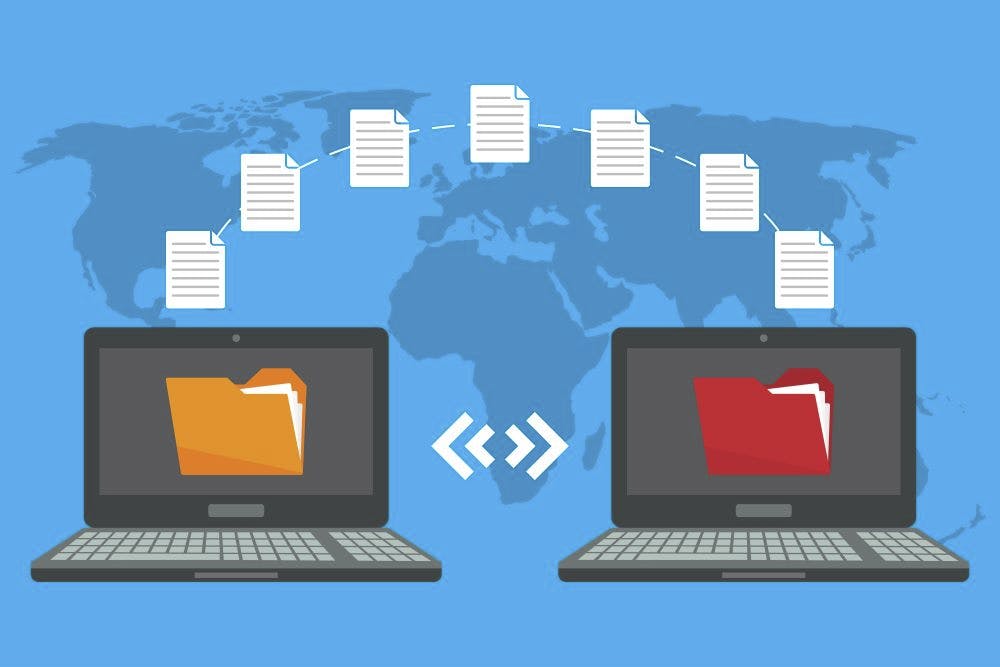DHS Makes IT Moves to Prep for Title 42 Expiration
With one authority largely used during the pandemic about to expire, the agency is modernizing tools and processes to prepare for heightened immigration surges.

With the COVID-19 public health emergency ending, many other directives and mandates will also expire. For federal agencies, this could lead to easing of things like COVID-19 vaccine requirements and mask mandates. But for the Department of Homeland Security, it means preparing for expected surges in the immigration system with the May 11 lifting of an authority used to help curb the spread of the virus during the pandemic.
“We’ve increased our capacity by a third over the last 24 months to help us be prepared for this. We’re working hard to do this,” Benjamine Huffman, acting deputy commissioner for Customs and Border Protection (CBP), said during a May 5 press conference.
Huffman was addressing the soon-to-be-lifted Title 42 of the U.S. Code, a decades-old authority that was largely used during the pandemic to block migrants at the border.
Naturally, this effort decreased activity within the immigration processing system over the past three years, but now agency leaders are preparing for an anticipated return to normal levels with a new process for handling unlawful entry and also resuming those seeking relief.
“In a post-Title 42 environment, we will be using our expedited removal authorities under Title 8 of the United States code. That allows us to remove individuals very quickly. We will, by May 11, finalize the rule that we published in a proposed format [where] individuals who do not access our lawful pathways will be presumed to be ineligible for asylum and will have a higher burden of proof to overcome that presumption of ineligibility. We are building lawful pathways, and we are delivering consequences for those who do not use those meaningfully accessible pathways,” DHS Secretary Alejandro Mayorkas said during the press conference.
Even outside of the Title 42 lift, the immigration system has been a matter of much-needed modernization for quite some time.
“We are working within a broken immigration system that for decades has been in dire need of reform,” said Mayorkas. “That is a fact about which everyone agrees, and we urge Congress to fix our broken immigration system. Until then, we will do everything that we can within our authorities to provide an orderly and safe pathway for individuals who qualify for relief under the laws of the United States of America.”
Creating New Border Enforcement Actions
To facilitate a return to immigration processes under Title 8 authorities, President Biden announced a revamped migration management strategy to increase security at the border and reduce unlawful entry. The strategy aims to expand and expedite legal pathways for orderly migration and create new consequences for those who fail to use the legal pathways.
“We are building lawful pathways that will provide a safe and orderly way for individuals who qualify for relief under United States law to reach the United States safely,” Mayorkas said. “We are building on the success of our parole processes that we announced on Jan. 5 for Cubans, Haitians, Nicaraguans and Venezuelans. We saw a 95% drop in the number of encounters of those individuals at our southern border because we built lawful pathways for them to access, and that is the model that we are building upon.”
DHS and the Department of Justice are surging asylum officers and immigration judges to review asylum cases at the border more quickly, with an aim to reduce initial processing times from months to days. The two agencies are also expanding capabilities and technologies to support faster processing, including installing hundreds of phone lines and privacy booths to better facilitate this process.
In line with the new strategy, DHS also announced new measures including leveraging CBP One, an app launched in 2020 to serve as a single user portal to a variety of CBP services.
DHS wants to use the app to provide a new mechanism for noncitizens to schedule appointments at ports of entry, facilitating safe and orderly arrivals once Title 42 is no longer in place.
Leveraging the Technology Modernization Fund
DHS’ Southwest Border Technology Integration Program will connect disparate systems and improve collaboration across the agency and its partners to provide standardized, secure data-sharing throughout the immigration lifecycle.
DHS was awarded $50 million in 2021 through the Technology Modernization Fund (TMF) for this program to provide enterprise, standardized, secure data sharing through the immigration lifecycle — further improving border flow and capacity management by using more automation to process and move documents through the system.
The funding allots $25 million to increase platform capacity and capability for the Unified Immigration Portal (UIP), $20 million to provide end-to-end digital immigration processing (DIP) and $5 million to improve the technology supporting the Alternatives to Detention program (ATD).
Additionally, with the funding, DHS aims to digitize the exchange of immigration forms; provide real-time, transparent reporting and exchange of information across DIP systems using interfaces from UIP; enhance the operational capability of DIP systems and support electronic document management.
The funding also supports DHS CIO Eric Hysen’s broader goal to take a systems approach to immigration technologies and applications — in collaboration with the agency’s component CIOs from CBP, ICE and USCIS — to solve historic challenges with strained resources and enforcement processing capacity.
“This proposal allows CBP, ICE and USCIS to replace remaining outdated manual data processes associated with border enforcement with a fully automated and interoperable platform to facilitate efficient and timely intake of noncitizens, protection of unaccompanied children, and reunification of families. This platform will enable personnel to manage medical information needed by state and local authorities to continue protections appropriately as individuals are released into U.S. communities,” according to the agency’s Fiscal Year 2022 Report to Congress.
This is a carousel with manually rotating slides. Use Next and Previous buttons to navigate or jump to a slide with the slide dots
-

White House Science Chief: US-Driven AI Sets Global Standards
Michael Kratsios outlined how American AI technology on the global stage will help standardize the tech and counter China’s influence.
5m read -

Doing More with Less is Muscle Memory for IRS, Former Deputy CIO Says
Darnita Trower discusses her experience, the legacy she’s left behind and how she pushed the IRS to modernize itself,
20m watch -

Opinion: Original Intelligence Is the Missing Piece for AI Transformation
Limitations of AI agents and development drive growing needs for workforce development and "original intelligence."
3m read -

VA CIO Targets Modern IT and Smarter Workforce Alignment
Agency leaders told lawmakers they are focused on trimming legacy systems and restructuring its workforce to streamline operations.
3m read -

Pentagon's $200M AI Contracts Signal Broader Effort to Transform Talent
The Army is leveraging Silicon Valley, reservist programs and new hiring strategies to integrate critical digital skills in its ranks.
5m read -

Inside DOD’s Push to Grow the Cyber Workforce Through Academia
Diba Hadi gives her first interview since becoming principal director of the DOD’s Cyber Academic Engagement Office.
15m listen -

Generative AI Demands Federal Workforce Readiness, Officials Say
NASA and DOI outline new generative AI use cases and stress that successful AI adoption depends on strong change management.
6m read -

Data Transparency Essential to Government Reform, Rep. Sessions Says
Co-Chair of the Congressional DOGE Caucus Rep. Pete Sessions calls for data sharing and partnerships to reduce waste and improve efficiency.
5m read -

DOD Turns to Skills-Based Hiring to Build Next-Gen Cyber Workforce
Mark Gorak discusses DOD’s efforts to build a diverse cyber workforce, including skills-based hiring and partnerships with over 480 schools.
20m listen -

Trump Executive Order Boosts HBCUs Role in Building Federal Tech Workforce
The executive order empowers HBCUs to develop tech talent pipelines and expand access to federal workforce opportunities.
3m read -

Tracking CIOs in Trump's Second Term
Stay informed on the latest shifts in federal technology leadership as new CIOs are appointed and President Trump's second term takes shape.
6m read -

DOL Turns to Workforce Development to Maintain AI Superiority
DOL is bridging the AI skills gap through partnerships and upskilling to ensure future AI workforce readiness.
10m watch
















